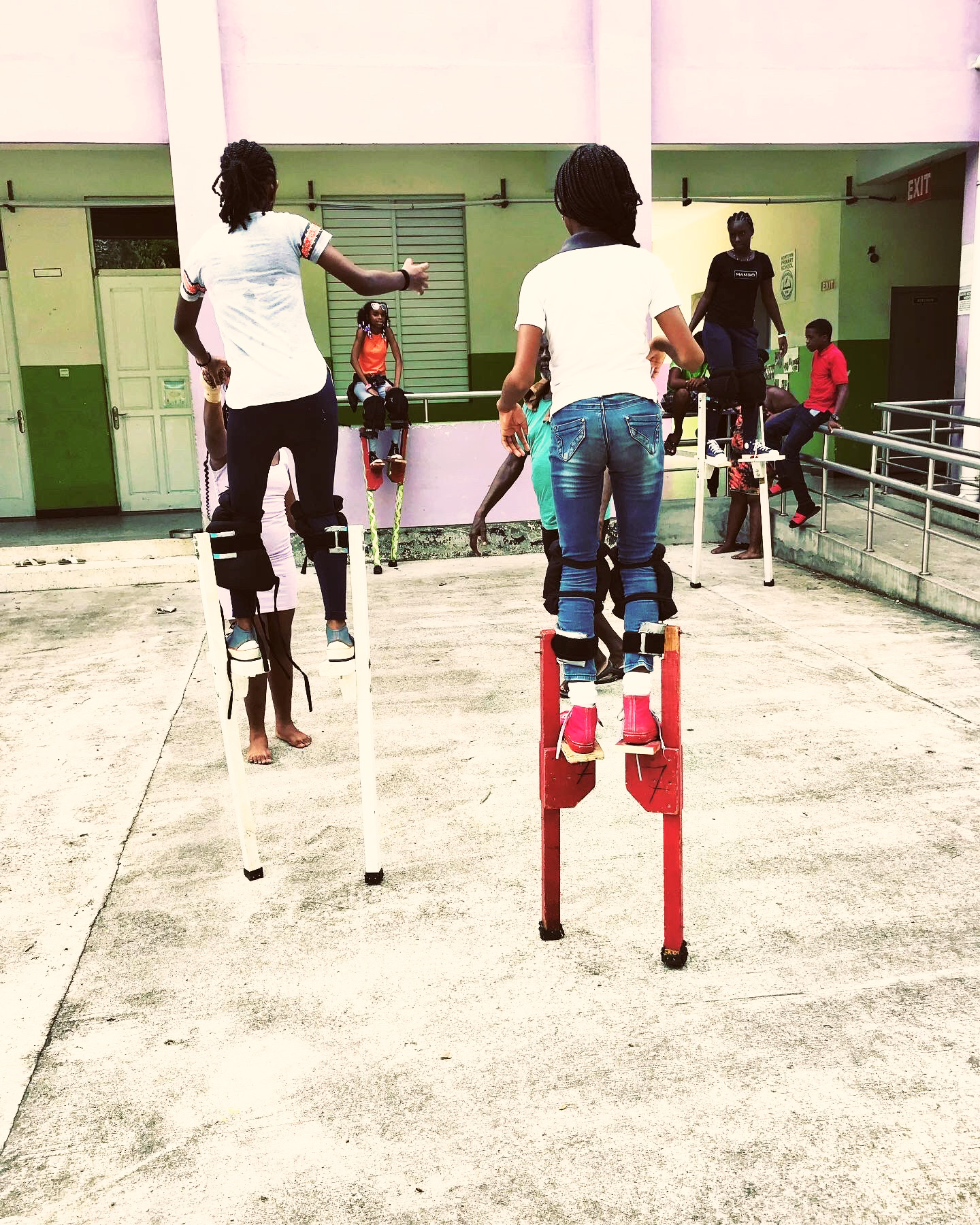Introduction
Stiltwalking, an ancient and captivating form of performance art, involves walking on long, slender poles, elevating the performer several feet above the ground. This remarkable art form requires a unique blend of skills, including balance, coordination, strength, and a deep understanding of one's body in space. In this blog, we will explore the world of stiltwalking and delve into its relationship with motricity and proprioception, two fundamental aspects of human movement and awareness.
Stiltwalking: A Brief History
Stiltwalking has a long and diverse history across various cultures. It has been used for practical purposes like crossing swamps and marshes or for entertainment in festivals, circuses, and parades. Over the years, it has evolved into a mesmerizing art form, captivating audiences with its grace and precision.
Motricity and Proprioception Defined
Before delving into their connection with stiltwalking, let's define motricity and proprioception:
- Motricity: Motricity encompasses all aspects of body movement. It involves not only the ability to initiate and control movement but also the coordination and synchronization of muscle groups to perform tasks effectively. In stiltwalking, motricity plays a pivotal role as it involves dynamic control over the body's position and movement on stilts.
- Proprioception: Proprioception refers to the body's ability to perceive and interpret its position in space without relying on visual cues. It is an innate sense that allows us to maintain balance, perform precise movements, and navigate through the world without constant visual confirmation.
The Art of Stiltwalking and Motricity
Stiltwalking is a testament to the mastery of motricity. It demands impeccable balance and coordination, as performers must continually adjust their body's position to remain upright on the stilts. To achieve this, stiltwalkers develop extraordinary muscle control, especially in the lower limbs. They use their motricity to initiate and maintain movement while maintaining their equilibrium on the stilts.
The use of motricity in stiltwalking goes beyond just walking. Performers execute intricate movements, such as dancing, acrobatics, and even juggling, while on stilts. These actions require a heightened sense of control over their bodies, making stiltwalking a dynamic and visually captivating art form.
The Role of Proprioception in Stiltwalking
Proprioception is the unsung hero of stiltwalking. Stiltwalkers rely on their innate sense of proprioception to maintain balance and prevent falls. The extraordinary height at which they perform makes visual feedback less reliable, so proprioception becomes a primary source of information for the brain.
Stiltwalkers develop a keen sense of body awareness through countless hours of practice. They learn to detect even the subtlest shifts in weight, the angle of the stilts, or the pressure on their feet. This acute proprioceptive awareness helps them make rapid adjustments to stay balanced. With time, stiltwalkers can anticipate changes in their body's position and adapt accordingly.
The Interplay of Motricity and Proprioception
Stiltwalking beautifully illustrates the synergy between motricity and proprioception. Motricity allows performers to execute precise and coordinated movements, while proprioception helps them maintain balance and stability during these actions. This interplay between the two is crucial for stiltwalkers to create a seamless and captivating performance.
In Conclusion
Stiltwalking is not merely a whimsical form of entertainment; it is a complex and disciplined art that relies on the principles of motricity and proprioception. The performers' ability to manipulate their bodies on stilts, execute daring acrobatics, and maintain their equilibrium at impressive heights is a testament to their mastery of these fundamental elements of human movement.
Whether you're an aspiring stiltwalker or simply an admirer of this mesmerizing art form, appreciating the delicate balance between motricity and proprioception enriches our understanding of the incredible capabilities of the human body. Stiltwalking is a reminder that with dedication, practice, and a profound connection to our bodies, we can achieve remarkable feats of artistry and physicality.
